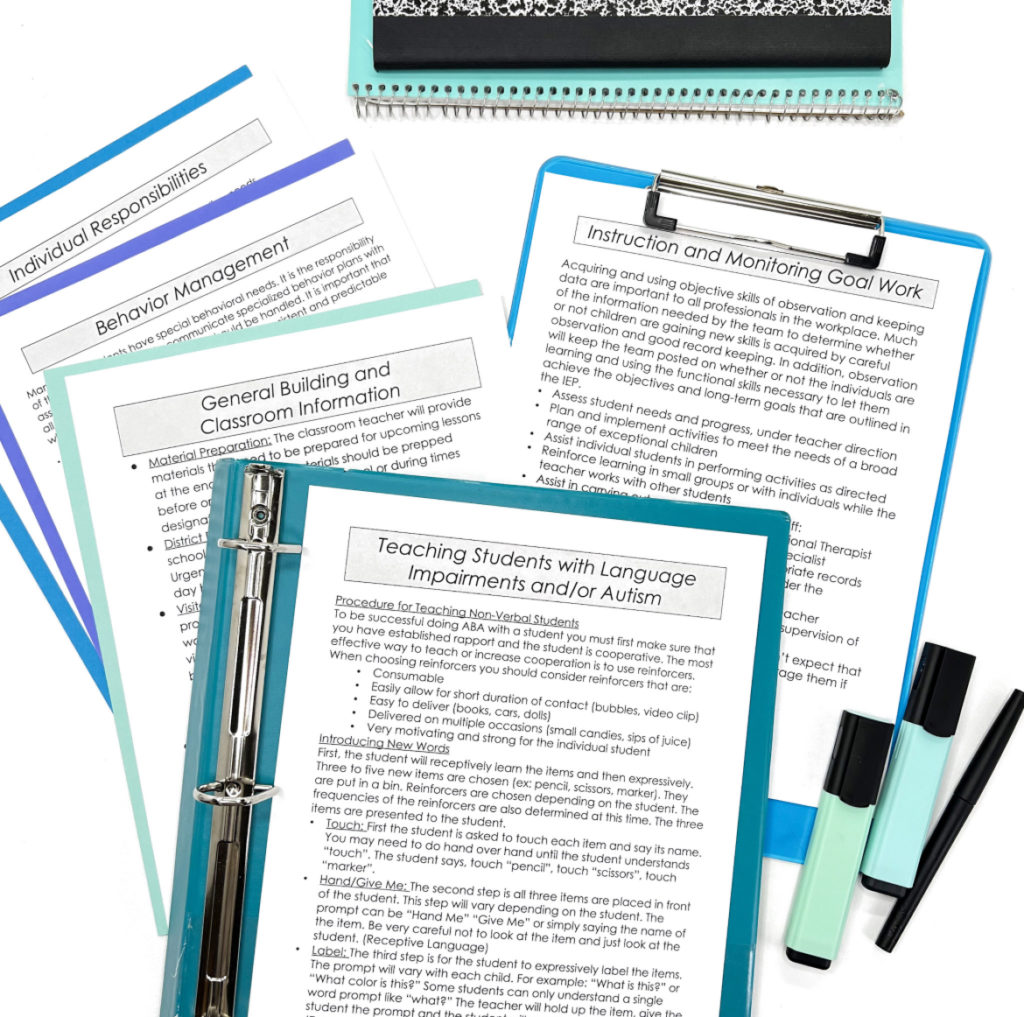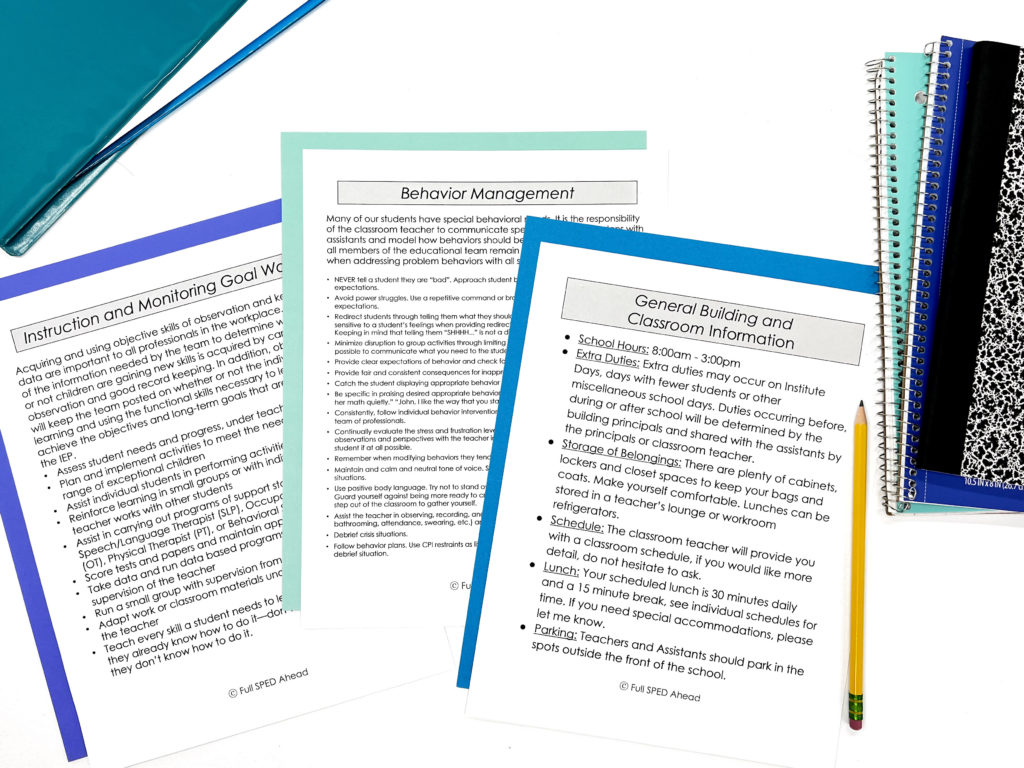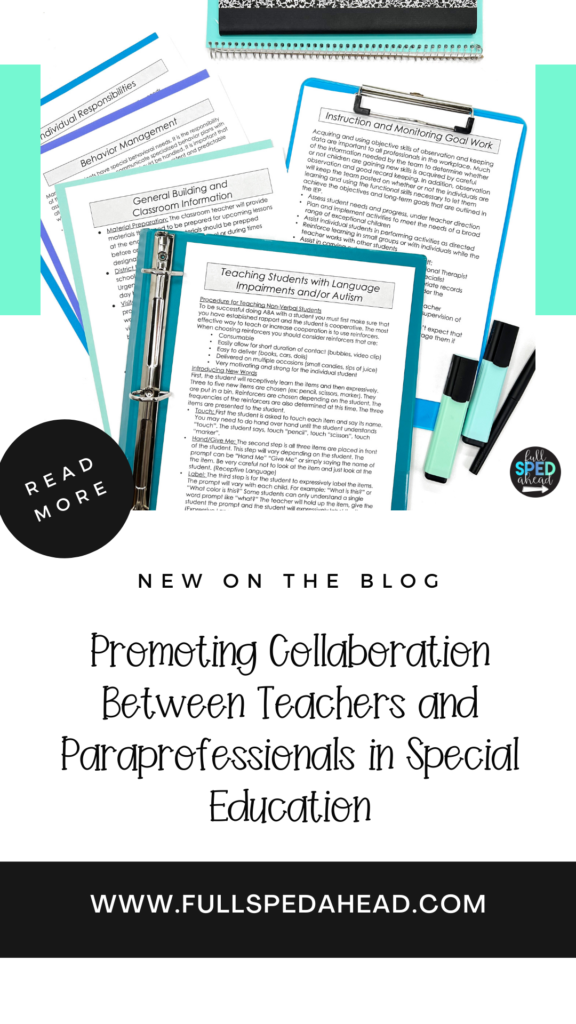In special education classrooms, collaboration between teachers and paraprofessionals is essential for creating an inclusive and supportive learning environment for students. The combined efforts of these professionals can greatly enhance the educational experience of students with special needs.
In this blog post, we will explore the importance of collaboration and provide strategies to promote effective teamwork between teachers and paraprofessionals. We will also highlight a valuable resource, the Editable Paraprofessional Schedule & Training Manual for Special Education, available on Teachers Pay Teachers.
One of the crucial aspects of promoting collaboration between teachers and paraprofessionals is having a clear understanding of each role within the classroom. Paraprofessionals, also known as teacher aides or instructional assistants, play an integral part in supporting students with special needs. They work closely with teachers to implement instructional plans, provide individualized assistance, and ensure the smooth functioning of classroom activities.

To establish effective collaboration, it is essential for teachers to clearly define the roles and responsibilities of paraprofessionals. The role of paraprofessionals in special education includes discussing the specific tasks paraprofessionals will undertake, the expectations regarding student support, and the level of autonomy they have in decision-making. By establishing this clarity, teachers can ensure that paraprofessionals understand their role within the classroom and feel empowered to contribute meaningfully to the educational process.
Additionally, regular communication and ongoing professional development opportunities are essential for building a strong partnership between teachers and paraprofessionals. Teachers should maintain open lines of communication to discuss student progress, share instructional strategies, and address any concerns or questions. Professional development sessions and training workshops provide valuable opportunities to enhance the skills and knowledge of paraprofessionals, enabling them to better support students with special needs.
Collaboration between teachers and paraprofessionals is vital for meeting the diverse needs of students in special education. By working together, teachers and paraprofessionals can share expertise, align instructional strategies, and ensure consistency in support. Collaboration also helps to establish clear communication channels, enhance classroom management, and foster a positive learning environment. When teachers and paraprofessionals collaborate effectively, students benefit from a cohesive and comprehensive approach to their education.
Collaboration between teachers and paraprofessionals is essential to meet the unique needs of students with special needs. By fostering open communication, defining roles and responsibilities, providing training and professional development opportunities, scheduling regular team meetings, and fostering mutual respect, teachers can establish a supportive and collaborative environment. The Editable Paraprofessional Manual for Special Education resource further facilitates collaboration by offering customizable schedules and a comprehensive training manual.
Learn more about the paraprofessional binder by reading this post.
By utilizing this resource, teachers empower paraprofessionals with the knowledge and skills necessary to effectively support students in the classroom. Together, teachers and paraprofessionals can create an inclusive and supportive learning environment where students with special needs can thrive academically, socially, and emotionally. By prioritizing collaboration and utilizing the available resources, special education teachers can ensure the success of their students and promote positive outcomes for all.
You can learn more about collaborating with team members in this blog post.
To promote successful collaboration, special education teachers can implement the following strategies:
a) Establish Open Communication: Encourage open and honest communication between teachers and paraprofessionals. Create a supportive environment where everyone feels comfortable sharing ideas, concerns, and insights.

b) Define Roles and Responsibilities: Clearly outline the roles and responsibilities of teachers and paraprofessionals to avoid confusion and ensure efficient teamwork. Establish guidelines for specific tasks and responsibilities, while also allowing flexibility for collaboration and problem-solving.
c) Provide Training and Professional Development: Offer training opportunities for paraprofessionals to enhance their skills and knowledge. The Editable Paraprofessional Schedule & Training Manual for Special Education resource available on Teachers Pay Teachers can serve as a valuable tool to provide comprehensive training and support for paraprofessionals.
d) Regular Team Meetings: Schedule regular team meetings to discuss student progress, share updates, and brainstorm strategies. These meetings provide an opportunity to collaborate, align goals, and address any challenges that may arise.
e) Foster Mutual Respect and Appreciation: Recognize and appreciate the contributions of paraprofessionals in the classroom. Celebrate successes, acknowledge their expertise, and foster a culture of mutual respect and support.
Grab this FREE paraprofessional get to know you form below!
Promoting collaboration between teachers and paraprofessionals is essential for creating an inclusive and supportive learning environment in special education settings. By understanding the roles, establishing effective communication, and utilizing resources like the Editable Paraprofessional Schedule & Training Manual for Special Education, teachers can foster a strong partnership with their paraprofessionals. Together, teachers and paraprofessionals can provide the best possible support and education for students with special needs, helping them thrive academically, socially, and emotionally.
Read more about paraprofessional collaborating here!
Read about the handbook here.
Working with student teachers? Learn more!

What are you looking for?

COPYRIGHT © 2024 Full SPED Ahead